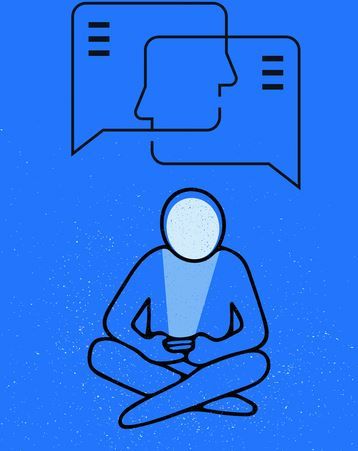Publication
Article
Psychiatric Times
Introduction: Working With Patients Who Have Eating Disorders
Author(s):
An introduction to our 2-part Special Report on eating disorders, including neurobiology of eating disorders, nutritional needs of patients, clinical response to psychosis, and more.
In this very interesting 2-part Special Report of 6 articles, several topics are reviewed that are of key importance in working with patients suffering from eating disorders. Although several medications are mentioned in these reports, it is important to remember that only 2 drugs are FDA-approved for eating disorders.
The first is fluoxetine, which is approved in a dose of 60 mg for adult patients with bulimia nervosa. There is a black box warning of an increased risk of suicidal thinking and behavior in children, adolescents, and young adults taking fluoxetine. The second is lisdexamfetamine dimesylate, which was approved in 2015 for adult patients with binge eating disorder under the FDA’s priority review program. It was not approved for weight loss but rather to decrease the number of binge eating days per week.
[[{"type":"media","view_mode":"media_crop","fid":"47976","attributes":{"alt":"","class":"media-image media-image-right","id":"media_crop_5843788793647","media_crop_h":"0","media_crop_image_style":"-1","media_crop_instance":"5706","media_crop_rotate":"0","media_crop_scale_h":"225","media_crop_scale_w":"64","media_crop_w":"0","media_crop_x":"0","media_crop_y":"0","style":"font-size: 13.008px; line-height: 1.538em; float: right;","title":" ","typeof":"foaf:Image"}}]]Neurobiology of eating disorders: clinical implications. Alice Ely, PhD, Laura A. Berner, PhD, Christina E. Wierenga, PhD, and Walter H. Kaye, MD, discuss the neurobiology of eating disorders. This is an area of great research interest that holds hope both for understanding these perplexing eating disorders and, perhaps, identifying more effective treatments. It is often difficult to visualize the neural circuits described in current reports, but there is a very helpful website that can facilitate visualization of the areas of the brain being discussed: www.g2conline.org.
Once at the website, click on the picture of a brain and this will take you to a 3D image of the brain: there is a list of parts of the brain that can be visualized. Choose the area of interest. When that portion of the brain comes on the screen, there is a box on the right side that allows one to move the brain up or down or right or left and label what is being seen at the same time. This particular website is part of the Cold Spring Harbor Laboratory. G2C stands for genes to cognition. Although not all areas of interest are available on this site, many are. Viewing it in 3 dimensions that you can move helps visualize what is being said about the neurobiology of various psychiatric disorders.
Understanding the nutritional needs of patients with feeding and eating disorders.In this article, Christina Scribner, MS, RD, focuses on the effects that various nutrients may have on the development and treatment of different mental health disorders. Although there is a great interest in determining whether these nutrients (eg, omega-3 fatty acids, folate, and vitamin B12) can prevent or treat various illnesses, the evidence for these effects is not compelling.
For example, although there are several studies assessing the possibility of using omega-3 fatty acids to treat depression, Appleton and colleagues1 concluded that there was not sufficient high-quality evidence to determine the effects of omega-3 fatty acids as a treatment for depression. The evidence for treating patients with eating disorders with omega-3 fatty acids is meager. In another review convincing evidence for a possible benefit of folic acid with or without concomitant vitamin B12 on cognition was not found.2
Eating disorders and psychosis. In this article the off-label use of antipsychotics is viewed as a clinician response to the occasional presence of psychotic symptoms among patients with eating disorders. Mary Seeman, MD, suggests that these often fleeting psychotic symptoms may be due to semi-starvation or, perhaps, especially among male veterans, to comorbid anorexia nervosa and schizophrenia.3
In a recent article by Stip and Lungu4 the salience network is described. This is a brain region composed of the anterior fronto-insular cortex and the anterior cingulate cortex that is involved in interoception, self-regulating, and action selection. This region of the brain may be dysfunctional in both eating disorders and schizophrenia. It could also be argued that many patients with eating disorders have delusional ideas (defined as fixed false beliefs unresponsive to confrontation or actual fact). For example, most patients with anorexia nervosa believe they are “fat” or “overweight” or “obese” and continue to believe this even when presented with evidence to the contrary.
There have also been multiple demonstrations that most patients with anorexia nervosa and bulimia nervosa have misperceptions of their size and shape. Neuropsychological testing shows some similarities between anorexia nervosa and schizophrenia, particularly in deficits in nonverbal intelligence functions and motor speed, but the deficits in schizophrenia are generally more severe and affect more areas than are involved in anorexia nervosa.5,6
You will find the following articles in Part 2 of this Special Report in the May issue.
Diagnosis and assessment issues in eating disorders. Dawn M. Eichen, PhD, and Denise E. Wilfrey, PhD, describe the changes in diagnostic criteria for the various eating disorders in DSM-5 and note the absence of a unique ICD-10 code for binge eating disorder. Three feeding and eating disorders diagnoses (avoidant/restrictive intake disorder, binge eating disorder, and other specified feeding or eating disorder) have the same ICD code (F50.8); this is likely to cause significant confusion when diagnostic data are used to plan for community treatment needs. The multiaxial system of DSM-IV-TR has been eliminated.
Although I found this system helpful, it was not consistently utilized by clinicians. DSM-5 includes both a revision of the DSM-IV-TR classification of personality disorders and proposes a complex alternative DSM-5 model for personality disorders. Although there have been many criticisms of DSM-5, Beekman and Schoevers7 comment that “the most fundamental problems inherent in a system that aims to classify symptoms, disregarding their etiology, have not been solved.”
Special issues in diagnosing and treating men. In this article, Tom Wooldridge, PsyD, and Ray Lemberg, PhD, note that eating disorders are less common in males than in females but are still significantly common among males. The percentage of male patients is lowest in anorexia nervosa (but still for every 10 female patients there are 3 male anorexia nervosa patients), higher in bulimia nervosa, and most common among binge eating disorder patients.
Eating disorders are not diagnosed correctly in many males because many health care professionals believe eating disorders are restricted to females. In the study that found that 26% of veterans diagnosed with eating disorder were male, it is important to remember that only 98 men were diagnosed with an eating disorder in a cohort of nearly half a million male veterans.3 Many males do not present for treatment because they are embarrassed to have a “female disorder.” A very interesting note in this report is that disordered eating (not necessarily an eating disorder) is increasing in males more rapidly than in females.
The interplay of mood disorders and eating disorders. Blaire Uniacke, MD, and Allegra Broft, MD, describe mood changes with disordered eating. Some of the symptoms of semi-starvation are very similar to symptoms of depression-including insomnia, fatigue, loss of interest in usual activities, low mood, irritability, decreased interest in sexuality, apathy, social withdrawal, and difficulty concentrating.
The study by Keys and colleagues,8 begun during WW II, was designed, in part, to determine how to avoid complications of refeeding among the many starved people during and after the war. They also noted that some of the patients in this study self-mutilated, a behavior frequently seen among eating disorder patients.
Disclosures:
Dr Powers is Director of the Center for Eating and Weight Disorders in the department of pediatrics at the Health Sciences Center of University of South Florida in Tampa. She reports no conflicts concerning the subject matter of this Special Report.
References:
1. Appleton KM, Sallis HM, Perry R, et al. Omega-3 fatty acids for depression in adults. Cochrane Database Syst Rev. 2015;11:CD0004692.
2. Malouf R, Grimley Evans J. Folic acid with or without vitamin B12 for the prevention and treatment of healthy elderly and demented people. Cochrane Database Syst Rev. 2008;4:CD004514.
3. Striegel-Moore RH, Garvin V, Dohm FA, Rosenheck RA. Psychiatric comorbidity of eating disorders in men: a national study of hospitalized veterans. Int J Eat Disord. 1999;25:399-404.
4. Stip E, Lungu OV. Salience network and olanzapine in schizophrenia: Implications for treatment in anorexia nervosa. Can J Psychiatry. 2015;60:S35-S39.
5. Reichenberg A. The assessment of neuropsychological functioning in schizophrenia. Dialog Clin Neurosci. 2010;12:383-392.
6. Kjaersdam Telléus G, Jepsen JR, Bentz M, et al. Cognitive profile of children and adolescents with anorexia nervosa. Eur Eat Disorders Rev. 2015;23:34-42.
7. Beekman AT, Schoevers RA. Are psychiatric patients likely to benefit from DSM-5? [Article in Dutch]. Tidschr Psyhiatr. 2014;56:217-221.
8. Keys A, Brožek J, Henschel A, et al. The Biology of Human Starvation. (2 volumes). Minneapolis, MN: University of Minnesota Press; 1950.






